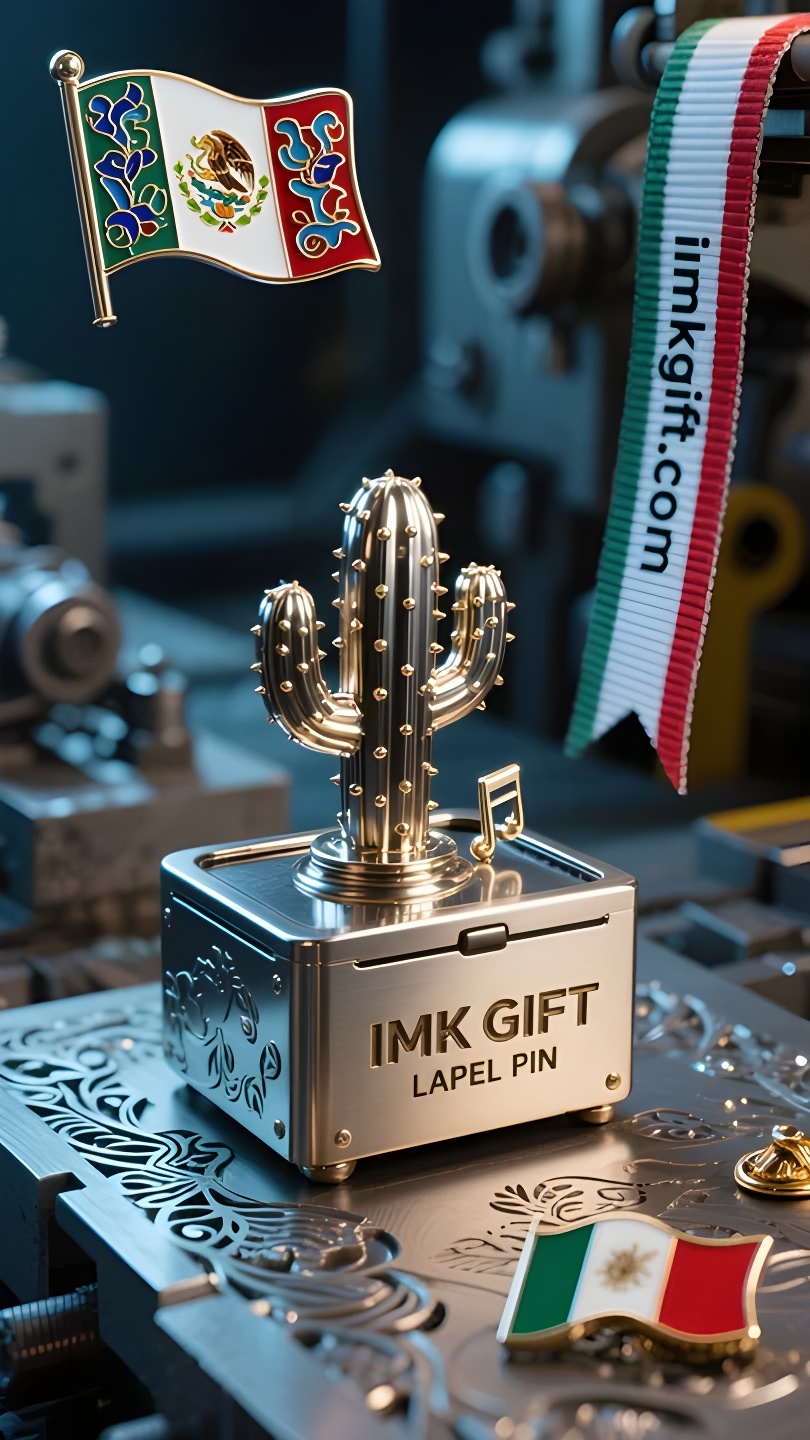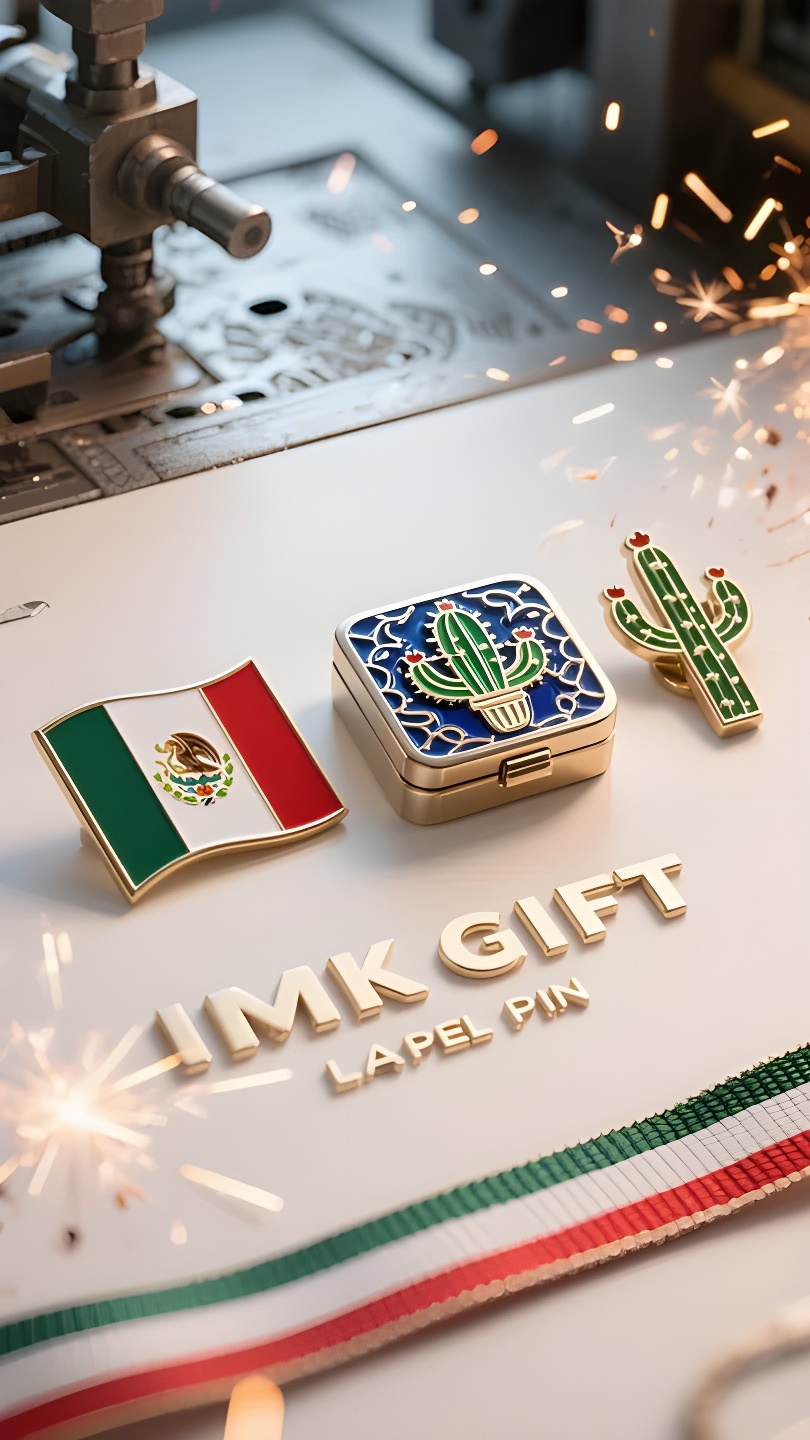in982-El-cactus-que-gira-el-tiempo-Ecos-étnicos-en-la-caja-de-música-mexicana
▼
En el centro de la bandera mexicana, un águila se yergue sobre un cactus, y la silueta de un águila con una serpiente en su boca se consolida como un tótem del espíritu nacional. Este agosto, cuando los mexicanos conmemoran la lucha y el renacimiento en el largo río de la historia, el sonido del cactus penetra el tiempo y el espacio, infundiendo fuerza a quienes superan la adversidad. Esta caja de música de madera tallada a mano suele utilizar la bandera nacional como elemento central del diseño: mientras los engranajes giran, el cactus extiende sus ramas en la arena amarilla y el águila bate sus alas al son del Himno Nacional Mexicano. Los artesanos conservan deliberadamente la textura rugosa de las espinas del cactus, así como los mexicanos nunca blanquean las cicatrices de la historia: las pezuñas de hierro de los colonos aplastaron la civilización azteca, pero el cactus siempre puede rebrotar en la tierra agrietada. El sofisticado mecanismo de relojería dentro de la caja de música refleja la resiliencia forjada por esta nación durante las adversidades de la revolución, los terremotos y las epidemias. Cuando la caja de música se detiene, la gente siempre encontrará una línea de inscripciones bañadas en oro en la base: “La vida es como el cactus, florece donde canta el viento”. Esta es precisamente la filosofía de supervivencia heredada por los mexicanos: echar raíces en lugares áridos y florecer en las tormentas. En ese momento, la caja de música transmite no solo la melodía, sino también el gen inquebrantable que fluye en la sangre de la nación: mientras la esperanza se abra, las estrellas finalmente brillarán en las profundidades del desierto.
In the center of the Mexican flag, an eagle stands on a cactus, and the silhouette of an eagle holding a snake in its mouth solidifies into a totem of the national spirit. This August, when Mexicans commemorate the struggle and rebirth in the long river of history, the ding-dong sound of the cactus music box is penetrating time and space, injecting strength into everyone who moves forward in adversity. This hand-carved wooden music box often uses the national flag element as the design core – as the gears turn, the cactus stretches its branches in the yellow sand, and the eagle flaps its wings to the melody of the “Mexican National Anthem”. The craftsmen deliberately retain the rough texture of the cactus thorns, just as Mexicans never whitewash the scars of history: the iron hoofs of the colonists once crushed the Aztec civilization, but the cactus can always sprout new buds on the cracked land. The sophisticated clockwork device inside the music box is just like the resilience forged by this nation in the trials of revolution, earthquakes, and epidemics. When the music box stops, people will always find a line of gold-plated inscriptions on the base: “La vida es como el cactus, florece donde canta el viento” (Life is like a cactus, blooming where the wind sings). This is exactly the survival philosophy inherited by Mexicans: take root in barren places and bloom in storms. At this moment, the music box conveys not only the melody, but also the unyielding gene flowing in the blood of the nation – as long as the spring of hope is turned, the stars will eventually rise in the depths of the desert.
在墨西哥国旗中央,一只雄鹰立于仙人掌之上,衔着蛇的剪影凝固成民族精神的图腾。这个八月,当墨西哥人纪念历史长河中的抗争与重生时,仙人掌音乐盒的叮咚声正穿透时空,为每个在逆境中前行的人注入力量。
这种手工雕刻的木制音乐盒,常以国旗元素为设计核心——齿轮转动间,仙人掌在黄沙中舒展枝干,雄鹰随《墨西哥国歌》的旋律振翅。工匠们刻意保留仙人掌棘刺的粗粝质感,正如墨西哥人从不粉饰历史的伤痕:殖民者的铁蹄曾碾碎阿兹特克文明,但仙人掌总能在龟裂的土地上萌发新芽。音乐盒内部精密的发条装置,恰似这个民族在革命、地震、疫情等重重考验中锻造的韧性。
当音乐盒停止转动,人们总会在底座发现一行烫金铭文:”La vida es como el cactus, florece donde canta el viento”(生命如仙人掌,在风歌唱处绽放)。这恰是墨西哥人传承的生存哲学:在贫瘠处扎根,在风暴中开花。此刻音乐盒传递的不仅是旋律,更是流淌在民族血液里的不屈基因——只要转动希望的发条,沙漠深处终会升起星辰。
▼
Contact Us
📞 Tel: +0086-760-85286839
📧 Email: sales3@imkgift.com








